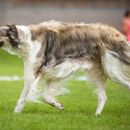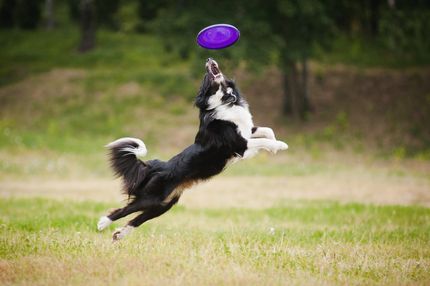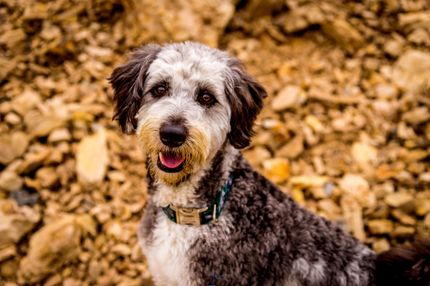Dogs are sensitive creatures with an excellent sense for human moods. That is why there are therapy dogs for depression.
How can you get a therapy dog for depression?
If depression is diagnosed by a psychiatrist and classified as a disability, an assistance dog for those with mental illness can be requested.
How can a therapy dog help with depression?
Dogs are sentient and sensitive. They can sense emotions, including anxiety, fear and joy. A depression therapy dog can provide support in everyday life:
- Loneliness and isolation are avoided.
- Dogs listen without prejudice.
- Dogs are sensitive to moods and emotions.
- They give life meaning and structure.
- They provide safety and security.
- They assist in the development of cognitive and social skills.
- They motivate to go out into the fresh air.
Dogs are trusted to give love without expecting anything in return.
What breeds are suitable as therapy dogs for depression?
Suitable breeds include golden retrievers, Labrador retrievers, Maltese, German shepherds and poodles. Basically, all companion dogs can be considered as assistance dogs, as they often have a calm temperament. It just depends a lot on the temperament of the dog!
How and where do I apply for a therapy dog?
Applying for a therapy dog depends on the region or country you are in. Here is a general description of the process, followed by specific information for Germany and Austria:
General process:
- Medical Necessity: A certificate from a doctor or therapist is usually required, confirming the medical necessity of a therapy dog for the patient.
- Approved organizations: There are specialized organizations or associations in many countries that specialize in training and certifying therapy dogs. An interested party should contact such an organization.
- Application process: most organizations have an application process where need, living situation and other factors are evaluated.
- Matching: after a successful application, the applicant is usually matched with a suitable dog that fits their needs and circumstances.
- Training: in some cases, training or an acclimation period might be required to ensure that the dog and applicant get along well.
- Ongoing Evaluation: In many countries, periodic checks and evaluations are required to ensure that the dog can continue to be used safely and effectively.
Germany:
- In Germany, the need for a therapy dog can be determined by a doctor or therapist.
- Organizations such as the "Deutsche Berufsverband für Therapie- und Behindertenbegleithunde e.V." provide information and guides on how to apply.
- There are also private therapy dog schools and centers where inquiries can be made.
Austria:
- Medical confirmation of need is also required in Austria.
- The Messerli Research Institute at the University of Veterinary Medicine in Vienna offers a lot of information and resources on the topic of therapy dogs.
- There are various associations and organizations such as "Therapiehunde Österreich" that specialize in the training and placement of therapy dogs.
It is important to research thoroughly before applying for a therapy dog and possibly contact several organizations or associations to get all the information and resources you need.
How much does a trained therapy dog cost?
A trained therapy dog can cost around €25,000. Self-training is less expensive, although courses can cost between €1,500 and €2,000.
Does health insurance cover the costs?
Generally, costs for therapy dogs are not covered by health insurance, except for guide dogs.
Can a dog be trained as a therapy dog by yourself?
It is possible to train your own dog. For official registration, the dog must be at least 1 year old and pass a certification test. Examinations are offered, among others, by the German Professional Association for Therapy and Disabled Assistance Dogs.
Assistance dogs for depression exist, but are not recognized as classic therapy dogs. Only guide dogs are financed by most health insurance companies. Self-training of one's own dog can be a more cost-effective alternative.
Training of a therapy dog in Germany:
- In Germany, there are certain requirements for training therapy dogs.
- Before the actual training, an aptitude test is conducted. This checks whether the dog has the necessary temperament, social skills and physical health.
- The basic training of the dog usually takes place over a period of several months to a year. Basic commands, socialization and certain behaviors are taught.
- Special training sessions are undergone to prepare the dog for its future duties as a therapy dog. This includes working with different people, especially people who have certain physical or mental impairments.
- After completion of the training, an examination is taken. Successful completion of this exam confirms that the dog has the necessary skills and knowledge to be used as a therapy dog.
- In Germany, there are various organizations and schools where training as a therapy dog can be completed. The Deutsche Berufsverband für Therapie- und Behindertenbegleithunde e.V. is one such institution that also offers certification.
Training of a therapy dog in Austria:
- In Austria, the standards and requirements for training therapy dogs are structured similarly to those in Germany.
- A pre-selection of the dog takes place to ensure that the dog is suitable for training. Likewise, a health examination is conducted.
- During basic training, the dog is trained in basic commands, obedience and social behavior.
- Specialty training is conducted to prepare the dog for their future roles in therapeutic sessions. This involves training them in real-life scenarios and with different groups of people.
- At the end of the training there is an examination. If this is passed successfully, the dog receives official recognition as a therapy dog.
- The training in Austria is carried out by various organizations, including the Austrian Veterinary Chamber and the Association Therapy Dogs Austria. They offer not only the training, but also a subsequent certification.
- In addition, there is still an annual review if you want to go with his therapy dog zb in a school or the like. This is carried out by the Messerli Institute.
Messerli Institute
The Messerli Research Institute, which is located at the University of Veterinary Medicine Vienna, the Medical University of Vienna and the University of Vienna, is dedicated to interdisciplinary research into the human-animal relationship. It combines scientific disciplines such as veterinary medicine, human medicine and biomedical ethics to shed light on complex issues from different perspectives.
With regard to therapy dogs in Austria, the Messerli Research Institute plays an important role.
Annual control by the Messerli Research Institute in Austria:
Regular checks are required for therapy dogs used in Austria to ensure that they meet the high standards of therapeutic work. The Messerli Research Institute is one of the institutions that carries out such controls.
During these controls, it is checked whether the dogs still have the necessary skills and the right behavior for therapeutic work. It is also ensured that the dogs are physically and mentally healthy.
In addition to checking the dogs themselves, the skills and knowledge of the therapy dog handlers are also evaluated. This ensures that the human and dog teams can continue to work effectively and safely in therapeutic settings.
If deficiencies or concerns are identified, recommendations for additional training or other interventions can be made to ensure that teams continue to meet high standards.
Through these checks, the Messerli Research Institute makes a significant contribution to quality assurance and the high standard of therapy dog work in Austria. It ensures that the teams of humans and dogs can provide the best possible support for patients and clients.
It is important to emphasize that there are different certification and training programs in both countries, which may vary depending on the institution and region. It is therefore recommended to check with the respective national organizations or associations.




















